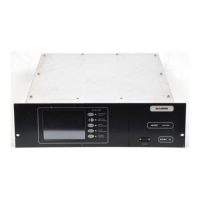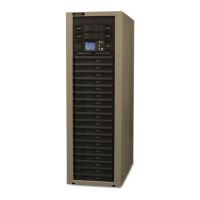______________________________________________HARRIS
888-9058-001
WARNING: Disconnect and lockout AC primary power prior to servicing
51
The fail-safe and external interlocks are active and may be on or off. External site
system wiring must be connected to these interlock terminals or jumpers must be added
at the terminals to turn these indicators off before the transmitter can be turned on. The
exciter should indicate mute.
STEP 1: Check the external interlock by operating whatever is connected to external
interlock, if there is nothing to connect place jumper at TB1-1 and 2 on I/O panel.
STEP 2: Press transmitter ON push-button.
STEP 3: Check for the external blowers (supply and exhaust blowers) to start.
STEP 4: Open the fail-safe circuit. The Fail-safe fault should indicate and the exciter
should mute. Re-close the fail-safe circuit. Check for normal status.
STEP 5: Open the external interlock. The external interlock status should be on and the
transmitter should shut off. Press ON button. The transmitter should not come on. Re-close
the circuit. The external interlock status indication should go out. The transmitter should
come back on if the setup selection is "auto-restart". If setup option is "lockout,” the
transmitter should not come back on until a manual ON command is given.
STEP 6: Check operation of RAISE and LOWER buttons, both on the control panel of the
cabinet and the GUI screen.
STEP 7: If the system has a remote control, place transmitter in the REMOTE mode and
check for operation of transmitter ON/OFF and RAISE/LOWER from the remote.
STEP 8: Check that LOCAL mode locks out remote commands. Local mode will NOT
lockout a remote off command.
STEP 9: Return exciter to minimum power when done by depressing and holding LOWER
commands for about 15 seconds.
STEP 10: Press OFF push-button at the control cabinet.
2.15.2 PA Cabinet Pre-Operational Check Out
WARNING:
CHECK 50V BUS BAR CABLES FOR TIGHT CONNECTION AND INSPECT FOR
CABLES WHICH MIGHT SHORT BUS BAR TO GROUND. CHECK FOR CORRECT
POLARITY. REVERSE POLARITY WILL DAMAGE THE RF MODULES AND/OR THE
CAPACITOR BANK.
